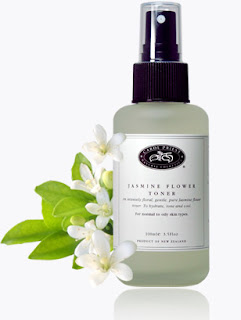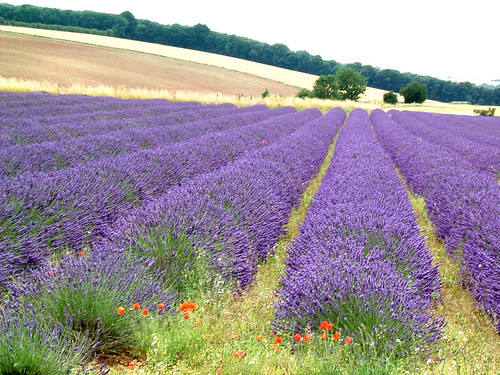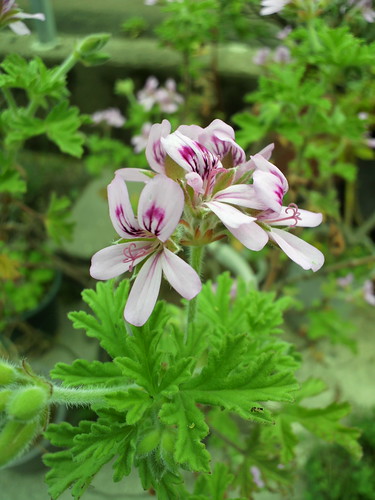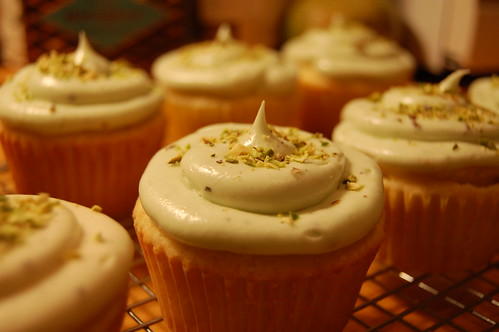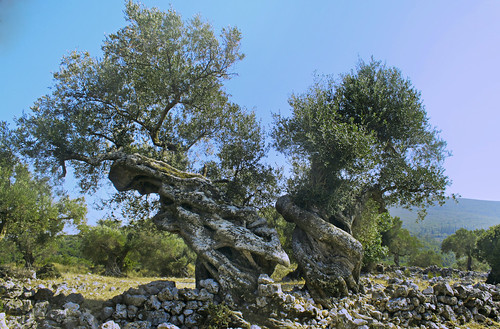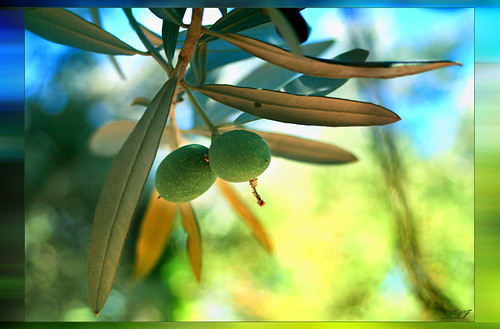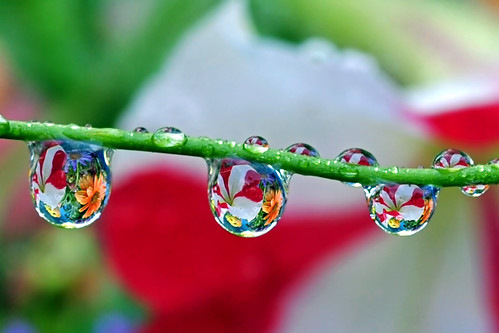 Water Drop Bouquet, a photo by Steve Wall on Flickr.
Water Drop Bouquet, a photo by Steve Wall on Flickr.Treasure hunting is one of my favorite aspects of going on vacation. Surprisingly, Mayne Island, a tiny island off the coast of Vancouver Island, is my favorite place to find unique knick-knacks, books, jewellery and food. Mayne is truly my heaven on earth and my home away from my home. Everything about it is comforting, from the sights, sounds and smells (briar roses, broom, salty ocean air, spruce, and sun-warmed blackberry bushes) to the people. The island's population is tiny - approximately 900 people and is like a village. Everyone is treated like a friend, doors are unlocked, and local farmers will leave produce unattended on the side of the road next to a jar to put your money in. Now that is what I call trust (something that is relatively foreign in big cities). The local artisans and artists who reside on Mayne are not only extremely talented but genuinely care about each of their crafts and love spending time with customers helping them choose products that they will be happy with and that will suit their personalities and lifestyles.
I get a huge thrill out of scouring the few shops and thrift stores whenever I am there. Almost everything to be found is one of a kind or few of a kind. My big find this year was a six dollar bottle of Rose Geranium Floral Hydrosol. For those who don't know, hydrosols are the distillate water that is produced when plant materials are steamed or hydro-distilled to create essential oils. Hydrosols contain the water-soluble fragrant molecules from plant, unlike essential oils which are what floats on top of the water, and represents only some aspects of a plant or flower. Hydrosols are a pure luxury and have many properties and applications, their most prominent use being in skin-care.
If you ever tried your own steam-distillation, you can also create a low-tech hydrosol in which the essential oil (non-soluble in water) are not separated from the distillate water, producing a more rounded aroma profile and preserving many of the therapeutic properties of the plant. These can be found among artisan distillers, usually made in very small batches and often from plants that were wild-harvested or collected in their own garden (if you're interested in distilling your own hydrosols, you can find a small
copper still and learn this ancient art from renown aromatherapy teacher
Jeanne Rose, who is the eldest pioneer of modern-day's natural perfumery.
Though very aromatic, these artisanal hydrosols are much more gentle than essential oils (their essential oil content would be less than 5%) when used for skin care and can be utilized in enhancing your complexion in skincare products, in body care, home fragrances (linen sprays are such example), as well as in food and beverage.
Lavender
Lavender (Genus:
Lavendula, a purple-flowering plant related to mint), is very well renowned throughout the world, not only for its delicate, sweetly herbaceous aroma, but also for its remarkable abilities to soothe and heal the body and mind and its almost miraculous power in healing burns, cuts and wounds. Lavender hydrosol contain full emulsified plant essences (including the water-soluble coumarin) and have a great deal of benefits to the skin and to one's emotional and mental state. Gentle and versatile, lavender is suitable for every skin type, soothing inflammation and providing a cooling sensation when spritzed on the skin. It has regenerative effects on damaged, irritated skin and when combined with oatmeal creates a gentle, deep-cleansing mask. Lavender hydrosols can be used as a cleanser, toner or makeup remover, after shave, air freshener or as a calming facial mist.
Rose
 Rose Bush, a photo by Nesha's Vintage Niche on Flickr
Rose Bush, a photo by Nesha's Vintage Niche on FlickrRoses have a fragrance that is immediately recognizable and universally loved. Renowned for centuries for their ability to calm the senses and for their positive effect on various aspects of physical health. Roses provide many benefits in terms of skin care. They have a balancing effect of the PH level of one's skin, can help increase circulation and therefore the distribution of nutrients in the skin, and help to regulate the production of sebum in the skin (the oil that skin naturally produces to keep itself healthy and protected, but that in excess can cause breakouts and dermatitis). Rosewater has a lovely, delicate floral flavor and is used in beverages and baking. It is used extensively in Middle Eastern and East Indian desserts. Many people swear by rosewater as a remedy for premenstrual syndrome (PMS) for its ability to balance female hormones. Some people even find it helpful in soothing sore throats.
Rose's antioxidant properties make it most suitable for mature and dry skin. Rosewater and glycerin are a classic apothecary preparation that can be found to this day in most pharmacies, and is applied to either face or hands as a simple lotion. Spritz rosewater every night on your face as a nourishing toner and moisturizer, either alone or layered with a rosewater based lotion or a rose-scented facial serum or rich cream.
Rose Geranium
From the flowers and leaves of
Pelargonium capitatum, this is my personal favorite hydrosol. I love
rose geranium for its uplifting, slightly green, almost lemony aroma. This particular hydrosol is great for combination, oily, or blemish-prone skin, and helps to quickly and effectively restore the skin's balance. This was especially beneficial for me in the summer time when the increased exposure to the sun caused my skin to become a little bit more oily (a common side effect of many skin types in response to sunburn and dryness). Rose geranium hydrosol's can be used as a facial mist, toner, cleanser or even as an air freshener. A natural anti-inflammatory and coolant, rose geranium is also helpful for use on sunburns and summer rashes.
Roman Chamomille
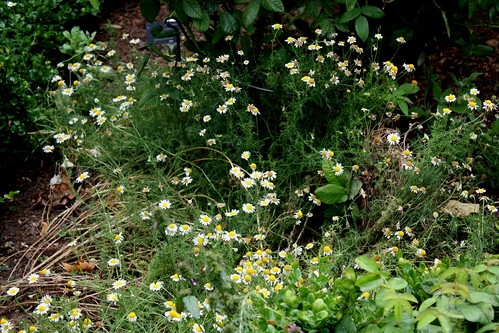 Roman Chamomille, a photo by noriko stardust on Flickr
Roman Chamomille, a photo by noriko stardust on FlickrWonderfully soothing, Roman chamomile (
Matricaria chamomilla) hydrosols are great for most skin types and are perfect for skin that is extra sensitive, like babies' skin. Incredibly relaxing, Roman chamomile is renowned for its ability to soothe one's jangled nerves and balance the senses. It can ease muscle cramps and can be taken orally to help with intestinal cramps and spasms. It can be used on the skin to ease any kind of inflammation, as a facial toner or spray. It is also a great enhancement when added to a moisturizer or facial mask.
Orange Flower
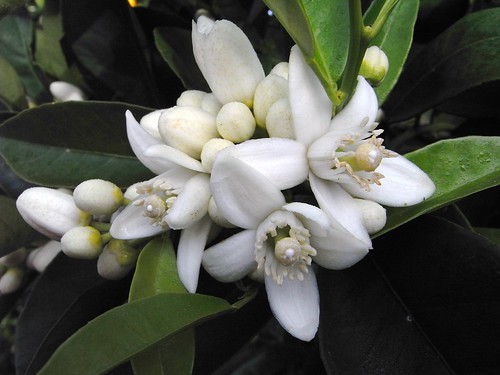 Neroli, a photo by Starry Raston on Flickr
Neroli, a photo by Starry Raston on FlickrOrange Flower Water (
Neroli water), from the flowers of the bitter orange tree (
Citrus aurantium subsp. amara or Bigaradia) is one of the best for reducing stress, with its citrusy floral hydrosol. Very astringent, this floral hydrosol is best for oily and acne-prone skin. For those with normal, dry or sensitive skin, this water should be combined with a more hydrating water such as rose or lavender. This water is optimal for blemish-prone skin when combined with an oil-absorbing clay mask. It should also be used as a toner or as a spritz (when used sparingly as to avoid excessive dryness) to balance skin and to calm anxiety. Orange Flower Water are also very popular in the Middle East, in both desserts and savoury dishes. Along with rosewater, it perfumes many famous confections such as Rahat Loukum, Malabi, and a wide assortment of syrup-soaked baclavas. It will also make a fragrant salad dressing or marinade for poultry or fish, providing a fresh-floral top note.
With so many options out there in terms of beauty products it is very important to research what is best for your skin type and body. Floral Hydrosols are great in that they are one hundred percent natural, affordable, and serve the skin in a multitude of different ways. They are also great for aromatherapy and provide a great deal of emotional benefits. And if you're a foodie - there are countless ways to incorporate them into the kitchen In other words, it is the ideal beauty product for the lover of all things natural, with an appreciation for fragrance.


